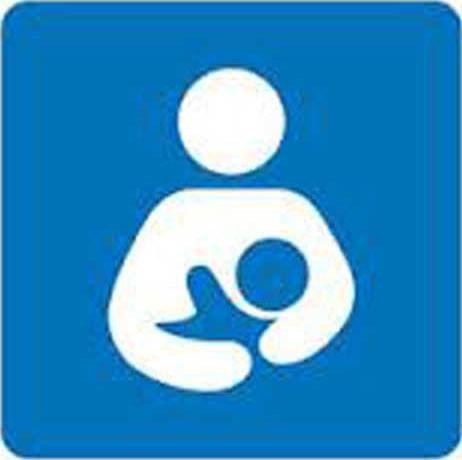Beverly Frizell, RD with the Barton County WIC program has been working extra hard to get the word out about the importance of breastfeeding this year to her clients in a multi-county area. It has always been a goal of WIC to increase breastfeeding, but this past year, the Barton County Health Department was awarded a grant to conduct a media campaign to help build awareness among the community as a whole.
“We hope we reached older folks listening, and that they might be more receptive when they see younger mothers breast feeding in public,” Frizell said. “The goal is to make breast feeding feel acceptable wherever you are.”
It seems to be working. Frizell has heard comments from the community that digital signs around town promoting breast feeding are working to encourage a perception that breastfeeding is the norm--after several years of the opposite.
Breast milk is proven to be the best food for a baby, so WIC goal is to do everything possible to help moms be successful with breastfeeding. The Barton County office has one employee that focuses entirely on contacting new moms. The most common concerns new mothers have is if nursing will hurt, and what it will do to the size and shape of the breast.
“Some people just don’t feel comfortable with the thought of breastfeeding, and don’t see the breasts as a tool to feed children,” Frizell said. “A lot of people find it convenient to formula feed because they can get help from others. So, we discuss ways others can help, and still maintain a practice of breast feeding.”
The WIC offices has a breastfeeding peer counselor and two dietitians on staff. All three are certified breastfeeding educators. They also have a La Leche League group that meets at the office. People can come to support group meetings in the afternoons and evenings.
La Leche League is an organization of trained and accredited volunteer mothers who provide support and help to pregnant and breastfeeding mothers. This support is provided through group meetings, online, via telephone and partnership efforts throughout their communities. The original group of mothers began meeting in 1956 in the Chicago area to support each other in their decisions to breastfeed at a time when fewer than 25 percent of new mothers did. For many years the popular thought was it was just easier to bottle feed, and there was no added benefit for breastfeeding, Frizell said. Now doctors know its not nearly the same, and so the scales have tipped again and advocates are trying to emphasize and think of breastfeeding as the first choice.
“We have a good rate of mothers who start breastfeeding--74 percent,” she said. “This trend is encouraging.”
A lot of drop off occurs as mothers go back to work. Women often are unsure of how to approach their employer about breast feeding or expressing their milk, Bev said. That’s one of the big obstacles. Frizell has found that of those 74 percent of clients that choose to breastfeed initially, only 20.2 percent are still continuing after six months. According to an article in the Official Journal of the American Academy of Pediatrics, “The American Academy of Pediatrics reaffirms its recommendation of exclusive breastfeeding for about 6 months, followed by continued breastfeeding as complementary foods are introduced, with continuation of breastfeeding for 1 year or longer as mutually desired by mother and infant.”
WIC dietician works to promote breastfeeding





